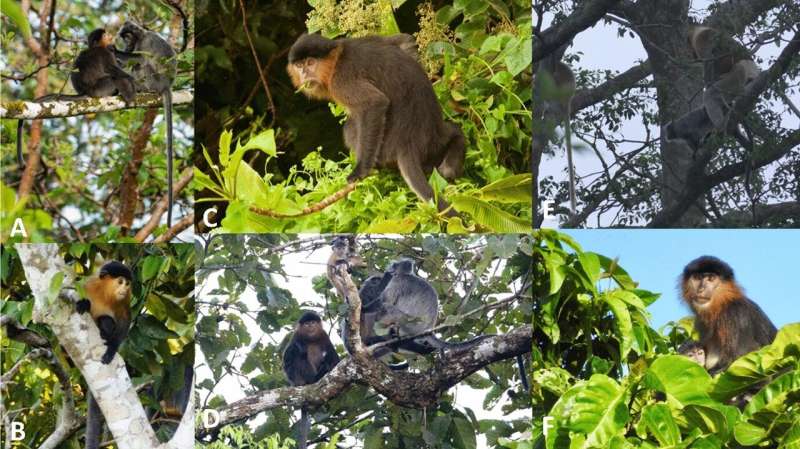May 6, 2022 report
Malaysia's 'mystery monkey' appears to be a hybrid between a proboscis monkey and a silvery langur

An international team of researchers has found evidence that suggests Malaysia's "mystery monkey" is a hybrid between a proboscis monkey and a silvery langur. In their paper published in the International Journal of Primatology, the group describes their analysis of pictures taken of the monkey and how they came to their assessment about its origins.
Back in 2017, scientists in Borneo began hearing of reports of a mystery monkey living in the forests of Malaysian Borneo, near the Kinabatangan River. At the time, the monkey was believed to be a juvenile. Suspecting that some interspecies mating may have occurred, the researchers began searching for mention of the monkey on social media sites, collecting pictures of the monkey as they went. Unfortunately, due to pandemic restrictions, they were not able to venture into the forest to have a look for themselves. Instead, they studied the pictures they were able to obtain.
The researchers noted that the monkey was living in an area where proboscis monkeys and silvery langurs shared space. Proboscis monkeys are quite well known for their large bulbous noses and pink faces. Less well known is the silvery langur, also known as the silvered leaf monkey. It has a much smaller nose and a black face. The two monkey types are distantly related but differ markedly in size. The proboscis grow to 76 cm and weigh on average 20 to 24 kg. The langur, on the other hand, grow to just 56 cm and weigh approximately 6.6 kg.
In looking at the photographs, the researchers found that the mystery monkey had a bulbous nose, but not nearly as large as is normally the case with the proboscis. She also had an oddly colored face, neither pink nor black—they describe it as ashy. The researchers suggest that despite their differences, it appears that the mystery monkey is a cross between a male proboscis and a female langur. More surprising is that she appears to have produced offspring—in one photograph, she can be seen cradling a baby and her breasts appear engorged suggesting she is its mother. Most offspring from crossbreeding are sterile.
The researchers suggest the crossbred monkey likely came about due to the two monkey groups being forced into an ever-smaller habitat due to oil plantation development.
More information: Stanislav Lhota et al, Is Malaysia's "mystery monkey" a hybrid between Nasalis larvatus and Trachypithecus cristatus? An assessment of photographs, International Journal of Primatology (2022). DOI: 10.1007/s10764-022-00293-z
Journal information: International Journal of Primatology
© 2022 Science X Network



















